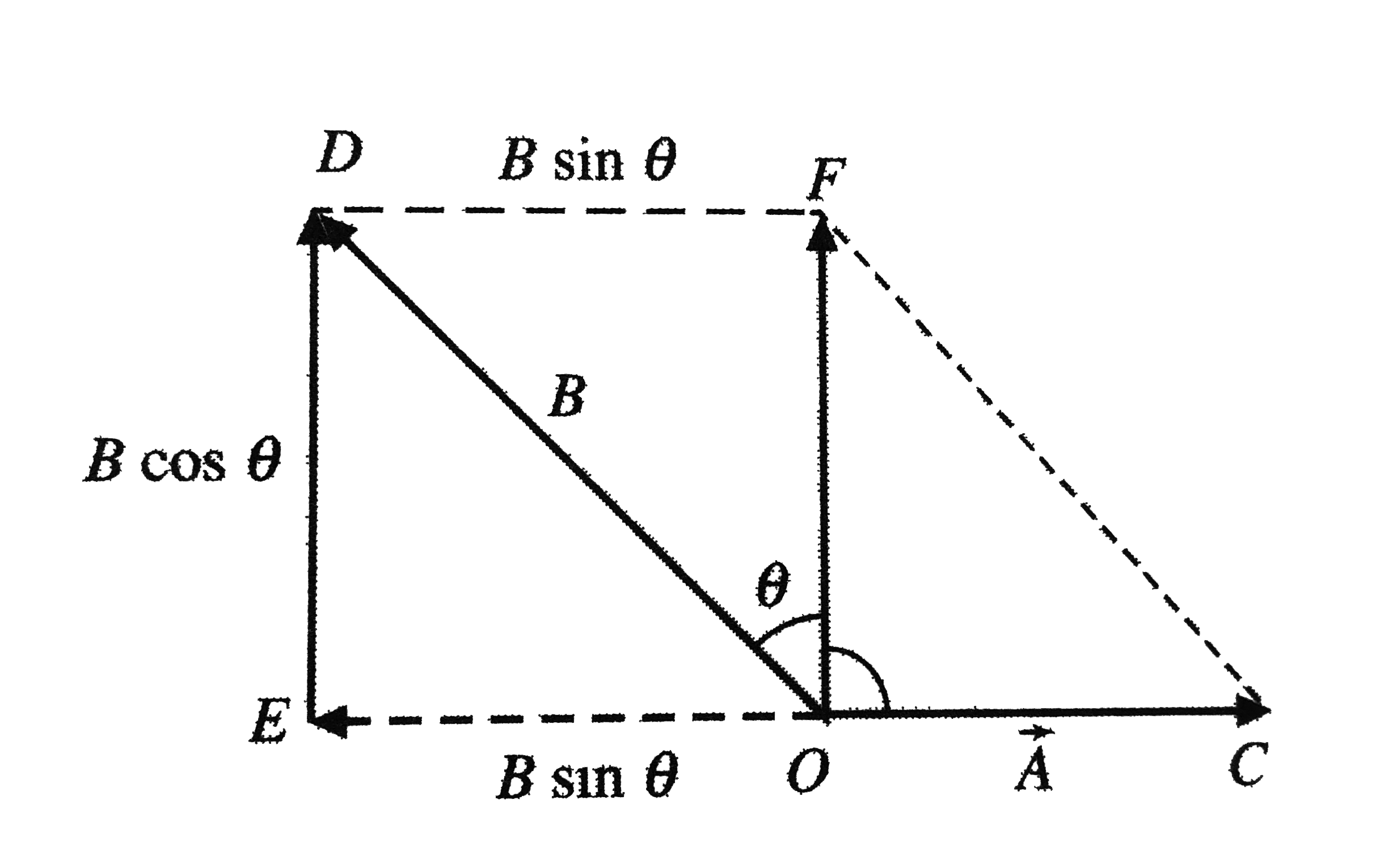Can the magnitude of →A−→B be equal to →A+→B?
To determine whether the magnitude of →A−→B can be equal to →A+→B, we can analyze the problem using the properties of vectors and their magnitudes.
1. Understanding the Magnitudes:
We need to find out if:
|→A−→B|=|→A+→B|
2. Using the Magnitude Formula:
The magnitude of a vector can be expressed using the formula:
|→A−→B|=√|→A|2+|→B|2−2|→A||→B|cosθ
|→A+→B|=√|→A|2+|→B|2+2|→A||→B|cosθ
where θ is the angle between vectors →A and →B.
3. Setting the Magnitudes Equal:
We set the two expressions equal to each other:
√|→A|2+|→B|2−2|→A||→B|cosθ=√|→A|2+|→B|2+2|→A||→B|cosθ
4. Squaring Both Sides:
To eliminate the square roots, we square both sides:
|→A|2+|→B|2−2|→A||→B|cosθ=|→A|2+|→B|2+2|→A||→B|cosθ
5. Simplifying the Equation:
We can simplify this equation:
−2|→A||→B|cosθ=2|→A||→B|cosθ
This implies:
−4|→A||→B|cosθ=0
6. Finding the Condition:
For the above equation to hold true, either |→A|=0, |→B|=0, or cosθ=0. The condition cosθ=0 occurs when:
θ=90∘
This means that the vectors →A and →B are perpendicular to each other.
Conclusion:
The magnitude of →A−→B can be equal to the magnitude of →A+→B only when the angle between the two vectors is 90∘ (i.e., they are perpendicular).
We need to find out if:
|→A−→B|=|→A+→B|
The magnitude of a vector can be expressed using the formula:
|→A−→B|=√|→A|2+|→B|2−2|→A||→B|cosθ
|→A+→B|=√|→A|2+|→B|2+2|→A||→B|cosθ
where θ is the angle between vectors →A and →B.
We set the two expressions equal to each other:
√|→A|2+|→B|2−2|→A||→B|cosθ=√|→A|2+|→B|2+2|→A||→B|cosθ
To eliminate the square roots, we square both sides:
|→A|2+|→B|2−2|→A||→B|cosθ=|→A|2+|→B|2+2|→A||→B|cosθ
We can simplify this equation:
−2|→A||→B|cosθ=2|→A||→B|cosθ
This implies:
−4|→A||→B|cosθ=0
For the above equation to hold true, either |→A|=0, |→B|=0, or cosθ=0. The condition cosθ=0 occurs when:
θ=90∘
This means that the vectors →A and →B are perpendicular to each other.
The magnitude of →A−→B can be equal to the magnitude of →A+→B only when the angle between the two vectors is 90∘ (i.e., they are perpendicular).
Topper's Solved these Questions
- MOTION IN A PLANE BOOK - MODERN PUBLICATIONCHAPTER - MOTION IN A PLANE EXERCISE - Revision Exercises (Additional Questions)
4 Videos
- MOTION IN A PLANE BOOK - MODERN PUBLICATIONCHAPTER - MOTION IN A PLANE EXERCISE - Revision Exercises (Fill in the Blanks)
9 Videos
- MOTION IN A PLANE BOOK - MODERN PUBLICATIONCHAPTER - MOTION IN A PLANE EXERCISE - Higher Order Thinking Skills & Advanced Level
6 Videos
- MECHANICAL PROPERTIES OF FLUIDSBOOK - MODERN PUBLICATIONCHAPTER - MECHANICAL PROPERTIES OF FLUIDSEXERCISE - Chapter Practise Test
16 Videos
- MOTION IN A STRAIGHT LINE BOOK - MODERN PUBLICATIONCHAPTER - MOTION IN A STRAIGHT LINE EXERCISE - CHAPTER PRACTICE TEST
16 Videos
Similar Questions
Knowledge Check
Two vectors →A and →B have equal magnitudes. If magnitude of →A+→B is equal to n times the magnitude of →A−→B, then the angle between →A and →B is :-
Acos−1(n−1n+1)Bcos−1(n2−1n2+1)Csin−1(n−1n+1)Dsin−1(n2−1n3+1)If →A=→B+→C and the magnitudes of →A,→Band→C are 5,4 and 3 units respecetively, the angle between →A and →C is :
Acos−1(3/5)Bcos−1(4/5)Cπ/2Dsin−1(3/4)For the any two vecrtors →A and →B, if →A.→B=∣∣→A×→B∣∣, the magnitude of →C=→A+→B is equal to
A√A2+B2BA+BC√A2+B2+AB√2D√A2+B2+√2×AB
The resultant of two vectors →A and →B is perpendicular to →A and equal to half of the magnitud of →B. Find angle between →B and →B?
View SolutionFind magnitude of →B and direction of →A . If →B makes angle 37∘ and →C makes 53∘ with x axis and →A has magnitude equal to 10 and →c has 5. (given →A+→B+→C=0)
View SolutionIf (→a+→b) is perpendicular to →a and magnitude of →b is twice that of →a then what is the value of (4→a+→b).→b equal to?
View SolutionIf →a=4→i−3→j and →b=6→i+8→j, find the magnitude and direction of →a, of →b, of →a+→b and of →a−→b
View SolutionThe resultant of two vectors →A and →B is perpendicular to the vector →A and its magnitude is equal to half of the magnitude of the vector →B. Find out the angles between →A and →B.
 .
.
View Solution
